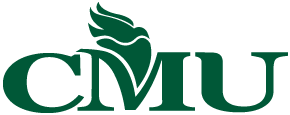University science departments today face many challenges, not least the call to teach more students with fewer staff, and less money. As
a result, the pressure is on to cut costs and make efficient use of time…and laboratory components of classes represent some of the more
expensive and labour-intensive aspects of science education. Since my days as an undergraduate student, there has been a gradual trend
– to reduce the number of laboratory classes in a semester, or to drop lab components of courses and replace them with problem sets, more
lectures, or more recently virtual, computer-based labs.
This trend is disturbing, for two reasons (well, more than two, but time is limited).
First, it deprives students of the opportunity to actually do science. Imagine if music performance majors didn’t play instruments or sing
until their senior year, or if athletes trained without playing their sport, until they registered in “Basketball 495, Senior Practicum”. Of
course, those would be rather absurd situations, but as an analogy of how science programs are typically structured, increasingly it’s not far
off.* Of course, history and theory have their place in science education, but they can’t be everything. Because doing science is very much an
art – there are manual skills involved in manipulating equipment, skills of intuition needed to frame an interesting question, and formulate
and test hypotheses to attempt to answer it, skills of flexibility and patience to work with and explain the often ambiguous, messy results of
real-world experiments…
If we want to produce insightful, creative scientists, or professionals in science-based fields like medicine, engineering, or even a citizenry
that can truly be described as scientifically literate, we need to give our students the opportunity to practice doing science. That’s what this
lab is for.
Second, beyond just gaining skill in scientific investigation, there are less-tangible benefits to laboratory education that are difficult for
students to replicate by reading a textbook or listening to a lecture. My job, as a biology teacher, is to invite my students to fall in love with
biology as a field of study. That can be done via lectures, yes, but there’s something much more alluring about science when one has the op-
portunity to actually try their hand at it.
My father taught chemistry at the University of Waterloo for over 30 years. I once asked him why he chose to go into chemistry in the first
place. His answer was that more than anything else, it was the vivid colours and strange smells of chemical solutions that drew him in.
A few years ago, I found my PhD advisor, on a particularly stressful, no-good, very bad day, sitting at the microscope looking at grasshopper
ovaries, which had little to do with anything that needed doing at the time. He just looked up at me and said, “I decided I needed to look at
beautiful things for a while,”. Doing science is a sensory experience, and in many ways, a return to being a kid and being thrilled at discov-
ering how something is put together, or how one thing leads to another.
This fall, students in my introductory biology class will meet a species of bacterium that infects plants, and actually genetically engineers its
host, forcing the plant to provide food and shelter. Later in the term, they will bring in food or other household items, and test them for their
tendency to cause mutations in bacteria, and most likely be stunned, fascinated, and perhaps disturbed by what they discover. And just
maybe, they’ll start to fall in love.
That course is just one among seven that will use this facility this school year. It’s a small facility, but it’s a good one, and it allows my col-
leagues and I to develop curricula that will give our students opportunities they would not have in similar courses at other institutions.
That’s why this laboratory is so important, and that is why I want to say a big thank-you to two levels of government, and a number of
donors – the Duecks in particular – for your support in making this kind of education possible. I hope and pray that this facility, and those
of us who work in it, will be worthy of the faith and goodwill you have shown us.
* Lindgren, Clark (2010) “Teaching by doing: turning a biology curriculum upside down.” Skeptic 15(4):35-37.
September 3, 2010
John Brubacher, Professor of Biology, gave a speech at the opening of CMU’s new Science Lab:
Categories
